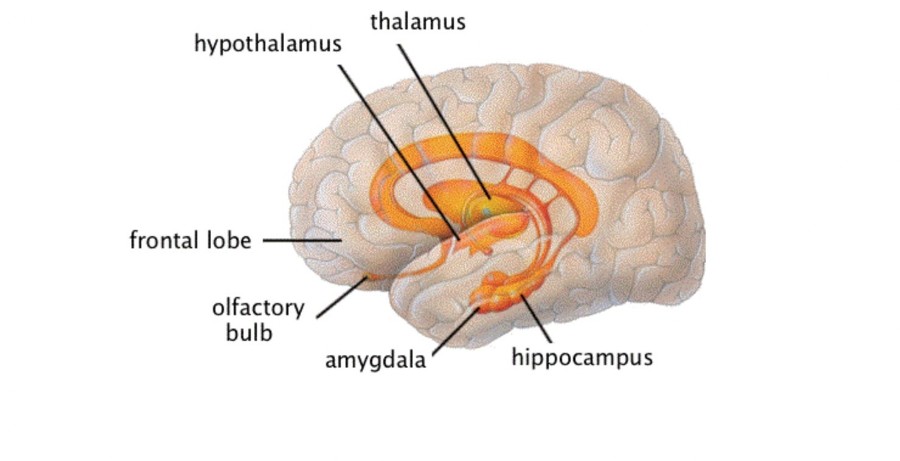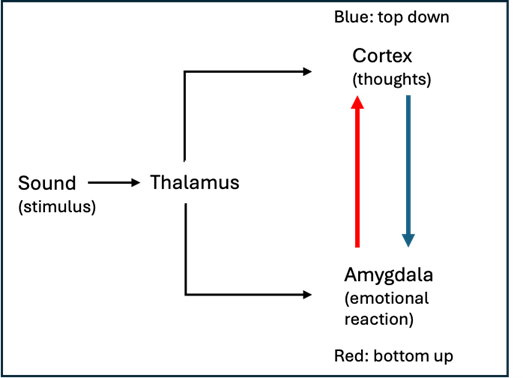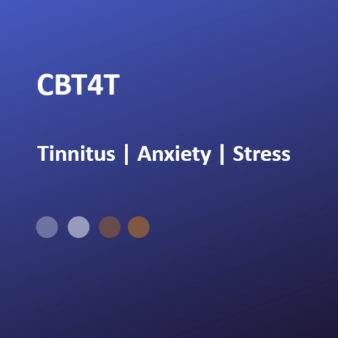Neuroplasticity and the CBT used in the CBT for Tinnitus E-Programme (CBT4T)
Making use of the collaborative research between neuroscience and psychotherapy, has brought about 100% potential for experiential change through putting natural brain plasticity to work FOR rather than against our patients, thereby revolutionising clinical practice in psychotherapy.
The CBT for Tinnitus E-Programme brings these cutting edge practices to anyone suffering because of tinnitus.
Debbie Featherstone MSc
Hearing Therapist, Psychotherapist & CBT Specialist in Tinnitus
CBT for Tinnitus E-Programme
What is Neuroplasticity?
Neuroplasticity is the brain’s ability to form and reorganise synaptic connections (neural networks, firing patterns and pathways) in response to learning or experience. For example, research has shown that when London taxicab drivers memorise city streets, their brains' hippocampi increase in size - this comes about through the brain's ability to adapt to variable conditions according to experiences. This type of plasticity is one of four main types called Map Expansion Plasticity.
As mentioned in the CBT for Tinnitus E-Programme course content: "Do NOT obsess about the complexity of neuroplasticity. You don't need to become a neuroscientist to have your neuro-physiology work for you! Your body and your brain already know what to do. All YOU need to do is give your body and brain some help by using the bespoke CBT tools in the programme regularly and consistently." In fact, the explanations have clearly been found to be extremely helpful by our course users: that how having this understanding - which was new to them - has helped explain what has been going on for them, and importantly, they can DO something about it and know why.
The 4 types of neuroplasticity are:
- Homologous area adaptation
- Compensatory masquerade
- Cross-modal reassignment
- Map expansion
The brain has the ability to continuously adapt its functional and structural organisation to the changing needs of the individual's experiences. The brain evolved to favour adaptation giving us the ability to adapt to changing circumstances and experiences; however, there are circumstances and experiences that lead to unhelpful adaptation, for example when we (often unintentionally) associate an experience with a negative meaning or outcome. This form of plasticity leads to maladaptation (poor or inadequate adaptation that doesn't serve our best interests).
For ease of understanding, conceptually, we can characterise three forms of neuroplasticity from the four types:
- Passive (or "it just happens") plasticity - there is no intention or deliberation in passive plasticity. Passive plasticity is particularly strong in children where their forming brains pick up on their surroundings and the behaviours of those they mix with. Passive plasticity can be fantastic - it's responsible for developing conditioning from younger years such as Tiger Woods for example, who apparently started playing golf at the age of two years old! You can imagine some of the downsides though, when children's experiences are unhealthy, even abusive. Passive plasticity starts to naturally decline after the age of around twenty five years. It is not so long ago that it was widely believed that there was no changing the brain once adulthood had been reached.
- Maladaptive plasticity - this form of plasticity often involves the experience of traumatic events. A traumatic event can change the wiring of the brain (through maladaptive plasticity) and from then on affects how you interpret certain experiences. After being in a bad car accident, for example, you may become hesitant when returning to the same location, or anticipate a similar scenario to those circumstances surrounding the previous accident. It's the brain's way of creating red flags to alert you to potential danger. There is a pre-Stage 1 section in the CBT for Tinnitus E-Programme that includes writing up Impact Statements. These indicate where there is or is not potential for maladaptive plasticity having formed.
- Adaptive plasticity - it is this form of plasticity we are aiming to employ through the process in the CBT for Tinnitus E-Programme. It enables us to change our brain, but unlike passive plasticity, it develops through intent. We can use adaptive plasticity to interrupt neural networks previously formed through maladaptive plasticity, then grow and strengthen the newly forming neural networks. It is this form of adaptive plasticity that was taking place through counselling, talking-therapies, cognitive therapy and the many other forms of psychological therapies for many more than a few decades and back further in time; yet it has taken fMRI and the contributions from various fields within neuroscience for us to know it. And it isn't only about formal counselling and psychotherapies: when you sit down and have a proper conversation with a close friend, a sister, a brother, a parent, about a problem you're experiencing, a worry you can't seem to shake that's happening at work or elsewhere.... As you begin to see "the wood from the trees" following that conversation, you begin to think a little differently and feel less stressed about it. Of course, if your friend (or therapist!) wasn't helpful, it would have a different effect! Possibly even be creating maladaptive plasticity to occur.
Adaptive plasticity is the form of neuroplasticity that we can influence directly. Putting adaptive plasticity to work for us starts by CONSCIOUSLY performing an action repeatedly (using the bespoke tools in the CBT for Tinnitus E-Programme) so that those actions become SUB-CONSCIOUS habits. Habit by its very nature is SUB-CONSCIOUS. Adaptive plasticity forms, strengthens and reorganises synaptic connections that change how we experience the world, integrating how we are in the world (how we feel) with how we view the world (our perspective). These two (our perspective and our feelings) are co-dependent; they are never mutually exclusive. Each has a bearing on the other.
Neural networks, pathways and patterns (the synaptic connections) are present throughout the brain - not just the "top brain" (neocortex). The connections form networks forging millions of links between bottom, mid and top brain, within each of them and between left and right sides of the brain through the corpus callosum. They are highly organised, and like any system there is a control centre.
What is the brain's "locus of control" and what does it DO?

Every experience we have in our environment (what we see, hear, touch, taste and smell) first goes to the THALAMUS. The thalamus is like the brain's "Grand Central Station". It sends the experience to the AMYGDALA and to the NEOCORTEX (top brain that includes the frontal lobes).
Bottom>Up and Top>Down Brain Action

Bottom>Up Brain Action
The amygdala receives the information first - think of the amygdala as FIRST RESPONDER. It is milliseconds later that the neocortex has received and processed the information from the thalamus.
The AMYGDALA reacts on the raw, unprocessed information:
- When the information is familiar, and/or is perceived to be insignificant, the amygdala does not react
- When the information is unfamiliar, and/or is perceived to be of significance, the amygdala triggers the fight/flight/freeze response
- The amygdala has hundreds of connectors to different parts of the brain (including the neocortex, hence Bottom>Up brain action) and body that are used to trigger reactions (sensations, feelings, thoughts) elsewhere in the brain and body
- The amygdala does not “think”; it only REACTS
Top>Down Brain Action
Milliseconds after the amygdala has received the information, that information has been processed by the NEOCORTEX and sent the processed information to the amygdala:
- When the information is familiar, and/or assessed to be of no threat, there is no triggering of the amygdala
- When the information is unfamiliar, and/or assessed to have a potential for being a threat, the neocortex attempts to make sense of the information and sends its assessment to the amygdala
- The neocortex has far fewer connectors than the amygdala
- The neocortex is where “thinking” takes place; the capacity the neocortex has is quite extraordinary. It can think objectively and subjectively. It is as good at thinking rationally, irrationally and equally good at imagining potential (e.g. What if….?”)
Bottom>Up is stronger than Top>Down due to the greater number of connectors from the amygdala, compared to those from the neocortex. The purpose of the amygdala is to keep us safe so that the individual and the species “survives”. Survival is how we have evolved. Bottom>Up brain action is present in all mammals including human beings. In human beings though, to a much greater degree than other mammals (so far as we currently understand), the neocortex enables us to problem-solve, make complex decisions, to fantasise, to create stories (narrative). Imagination is produced in the neocortex: hence our ability to create narratives be they based in fact or fantasy.
A useful saying to bear in mind is “Don’t trust your cortex”! Because thinking a thought does NOT make it REAL. Real or not, the neocortex can trigger the amygdala by thinking thoughts! Quick example: You have a presentation to make at work - something you don't like doing/don't want to do (there'll be lots of reasons - some made up, some may have happened in the past). Just THINKING thoughts about losing your place during the presentation, for example, or thinking "I'm going to make a big mess of this" type of thought, triggers your amygdala in to action! When, in fact, you are sat in your lounge watching the TV!
******
The Neuroscience & CBT Process in the CBT for Tinnitus E-Programme
- The practices, learning and bespoke tools provided in the CBT for Tinnitus E-Programme (CBT4T) purposefully optimise adaptive plasticity, promoting sustained change consistently reflected in the clinical outcomes and RESULTS AND CBT4T REVIEWS.
